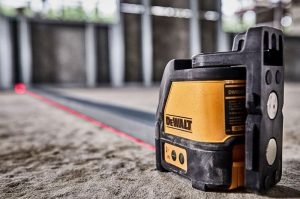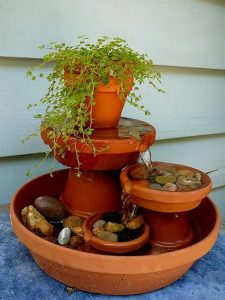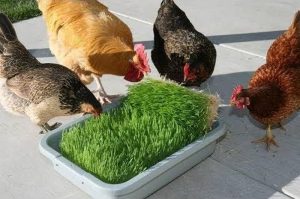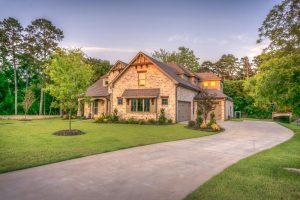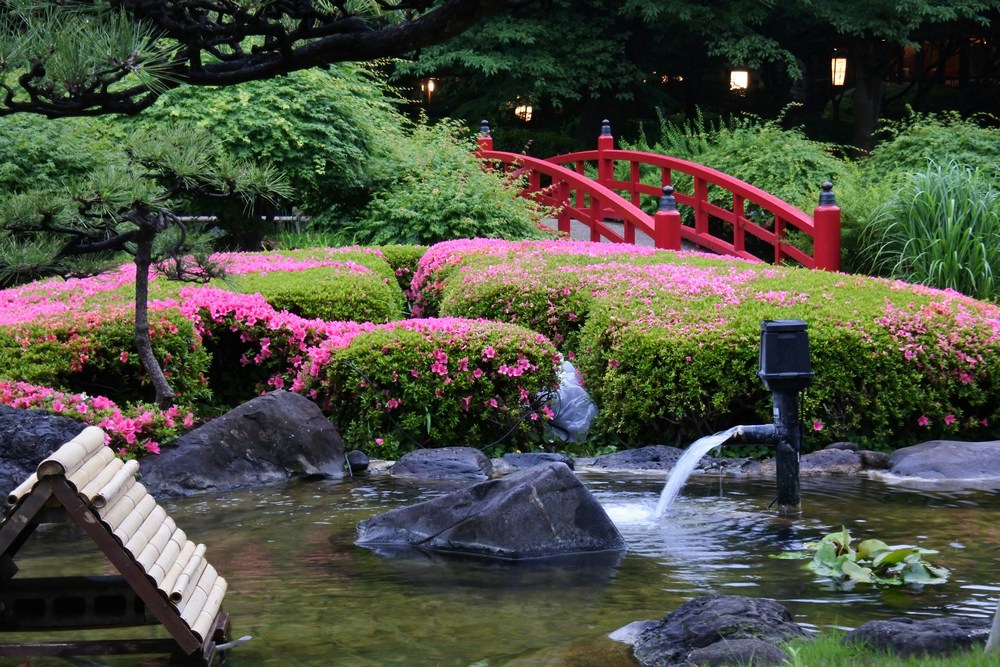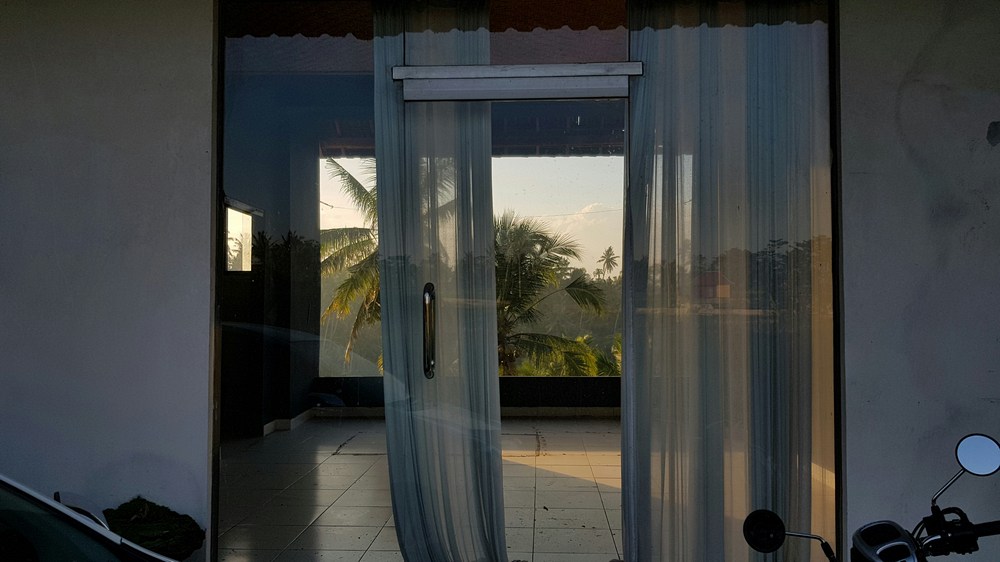Last Updated on March 25, 2024 by teamobn
The Australian bush is a biologic wonderland, home to many, many unique timber species. From the clean Blackbutt to the sophisticated Red Mahogany, you’re sure to discover a wide range of Australian timber varieties that matches your styling aesthetic.
Australian timber varieties are hard and extremely durable as well as drop-dead gorgeous when correctly finished. Used as flooring, they can withstand treatment that would leave most other timber varieties scarred and dented. As paneling, these timbers can radiate a visual warmth that is impossible to replicate through laminates, paints or other wall finishes. Here are six of the most popular…
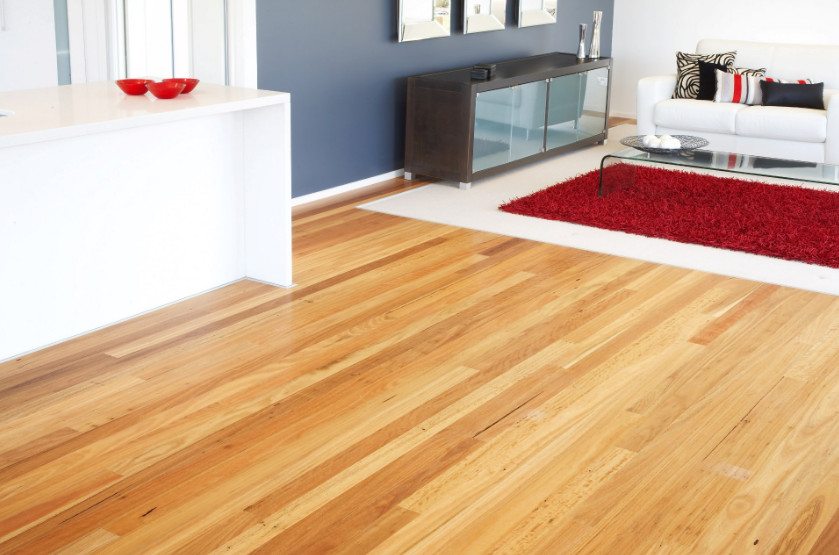
Top 6 Australian Timber Varieties
Australian Beech
This heavily textured Australian timber varieties offers a wide spectrum of wood tones. From a light creamy hue through to a deep maple colour, this variety of timber would perfectly complement any room that requires an energetic and sophisticated edge. The species rates 6.5 on the Janka hardness scale.
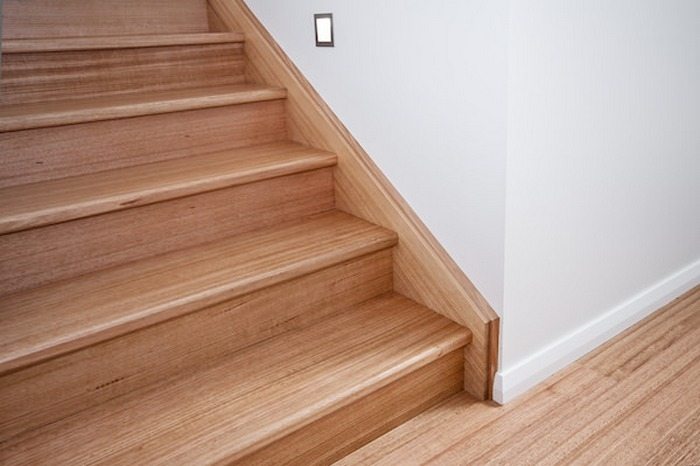
Tasmanian Oak
Tasmanian Oak is one of the Australian timber varieties that has its own aura. Everything feels solid and concrete with this robust timber flooring species. With a natural uniform tone. Tasmanian Oak will lighten the feel of any space. Pair this timber with a clean interior to create a cosy and simplistic living space. Tasmanian Oak varies from straw to reddish brown with intermediate shades of yellows. While one of Australia’s softer hardwoods with a Janka rating of 4.5, that still places it at twice the hardness of timbers like Baltic Pine!
Tasmanian Oak is especially suitable as paneling due to the warmth it imbues to any area from a bedroom to an office boardroom. Tasmanian Oak is also an excellent furniture timber.
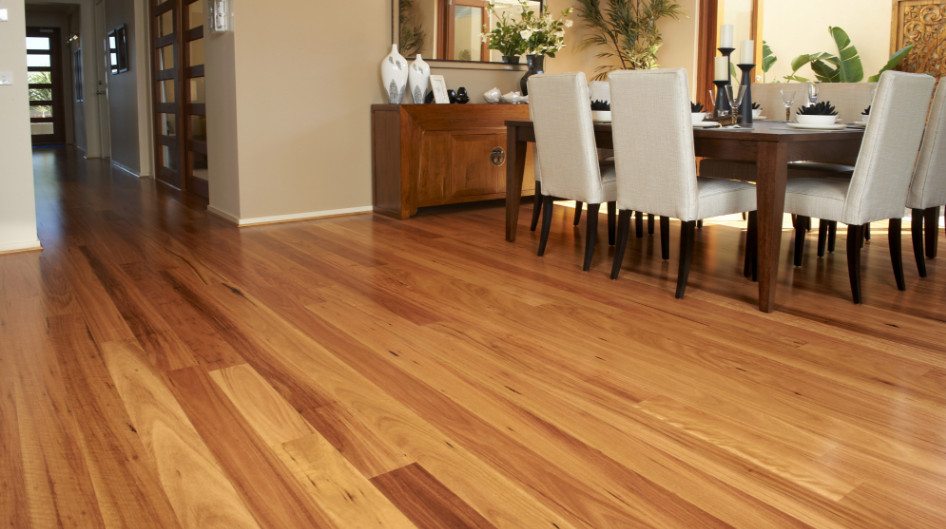
Blackbutt
Contrary to its species name, Blackbutt actually has quite a light timber shade for being one of the Australian timber varieties. Rather, the name Blackbutt comes from this species’ tree form, whereby the bottom area of the bark is a deep black. Like Tasmanian Oak, Blackbutt creates a cosy feel to your room, thanks to its warm, but light shading. This classic Australian timber varieties has a medium level of contrast, over a uniform texture. With a hardness ranking of 9.1, this timber is ideal for high traffic areas.
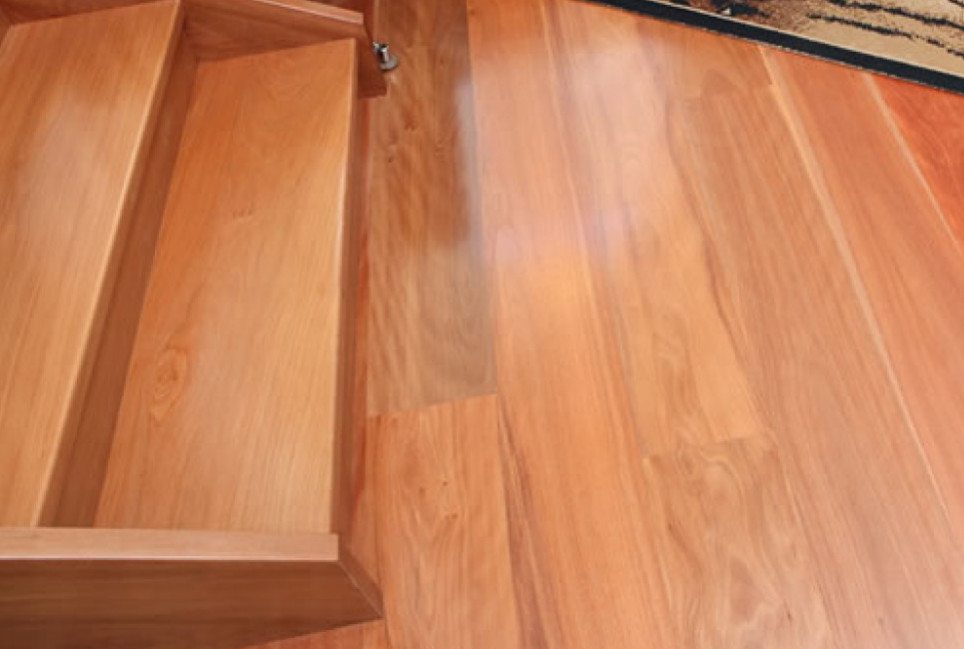
Brushbox
This exquisite Australian timber varieties is a pleasant compromise between the heavy contrast of the Beech and the uniform texture of the Oak. Featuring pink hues and creamy textures, Brushbox would suit a well lit area that lets the natural wooden texture shine. It’s fine, even texture and beautiful, rich colour is complemented by a hradness ranking of 9.5. . It can vary from pale pinkish grey to rich reddish brown. It can be used for paneling, cladding and, of course, flooring. In drier inland areas of Australia, Brushbox is even used for bridges.
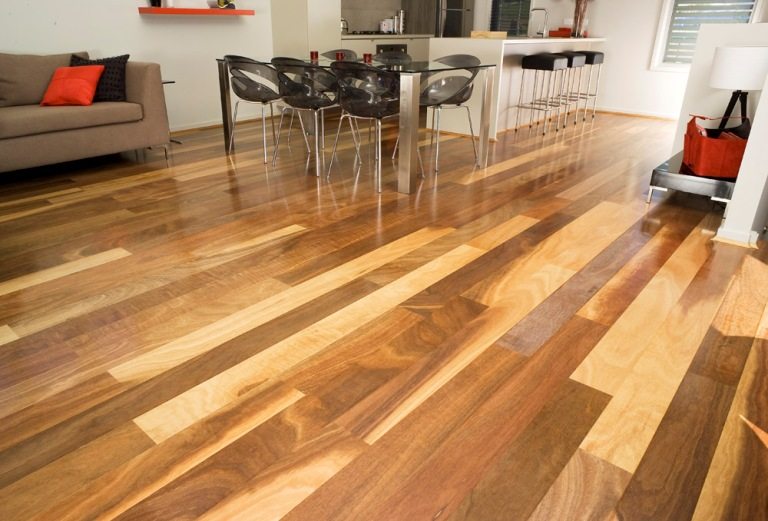
Spotted Gum
Unlike the species we’ve explored so far, the Spotted Gum Australian wood variety features plenty of dark brown highlights, offering a bit of contrast against the warm beige we’re used to seeing. As the name suggests, the natural grade of this timber offers plenty of patterned wood features. It’s a beautiful timber to work with and adds enormous interest to a home. While not the hardest Australian native, it is right up there ranking 11 on the Janka scale.
Spotted Gum is an extremely versatile species and is used for anything from heavy engineering construction including piles and poles, shipbuilding, agricultural machinery through to flooring decking and plywood. Because it can withstand very high impact forces, it’s the main Australian species for tool handles like axes and mattocks.
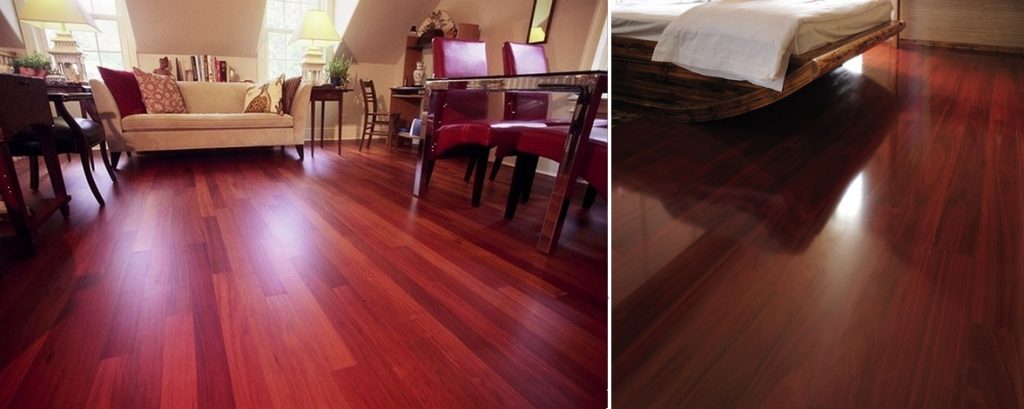
Red Mahogany
The Red Mahogany is a rather unique timber variety, displaying luxurious reds in its natural state. This cosy variety will offer an unrivalled warmth to any room, while also creating a feel of rich magnificence. The uniform colour of Red Mahogany creates a visual sophistication and elegance. It’s extremely tough and durable with a hardness ranking of 12. It is used for flooring, as shown here, and also for decks, cladding, furniture and even in musical instruments and rifle butts.
This is just a sampling of the many spectacular Australian hardwoods you can use in and around your home. You’ll pay more than you will for pine, bamboo or laminates, but the beauty and durability are, in my opinion, worth every cent!
For a more detailed introduction to your hardwood choices, see my earlier article, Australian Hardwood Floors here…
Innovative Uses of Australian Timbers
Australian timber varieties have diverse range and exceptional qualities. You’re not just confined to traditional applications like flooring or furniture. They’re increasingly finding their way into innovative projects, where their unique characteristics are being leveraged in creative and sometimes unexpected ways. From art installations to sustainable packaging, these timbers are proving their versatility and appeal in the modern world.
Artistic Expressions with Red Mahogany
Red Mahogany is one of the Australian timber varieties admired for its deep, rich hues and durability, qualities. You’ve seen it transcend its conventional uses in the hands of a creative person.
Artists and sculptors are now embracing Red Mahogany for its aesthetic appeal, using it to create stunning pieces of art that highlight the natural beauty of this timber. Its workability allows for intricate detailing, making it a popular choice for large-scale sculptures and bespoke art pieces that require a touch of natural elegance and longevity.
Sustainable Packaging with Tasmanian Oak
The push for environmental sustainability has found a champion in Tasmanian Oak. This Australian timber varieties is changing the game in sustainable packaging. Its strength and lightness, matched with sustainable forestry, make it ideal for eco-friendly packaging.
Brands now use Tasmanian Oak for high-end products, from cosmetics to gourmet foods. This approach elevates product presentation while promoting sustainability. Australian timber varieties like Tasmanian Oak are shaping the future of packaging. They offer stylish, biodegradable alternatives to traditional materials.
Musical Instruments from Blackbutt
Australian timber varieties are also making waves in the music industry. Blackbutt is prized not just for its look and durability but for its acoustic properties too. Instrument makers are turning to Blackbutt for guitars, woodwinds, and percussion. Its clear, resonant sound makes it a favorite in the quest for quality tone.
Blackbutt’s durability means instruments can handle travel and performance stress. This Australian timber variety is a top pick for musicians worldwide. It highlights a shift towards materials that blend functionality with ethical standards.
Eco-Friendly Building Materials from Spotted Gum
Spotted Gum is breaking new ground as an eco-friendly building material. Its strength and resistance to wear make it ideal for innovative construction projects, including prefabricated homes and modular building elements.
Architects and builders are leveraging Spotted Gum’s durability and aesthetic appeal to create structures that are not only environmentally sustainable but also beautifully designed. This timber’s versatility is paving the way for a new era of green construction, where beauty and sustainability go hand in hand.
Brushbox in Fashion and Accessories
Brushbox, with its fine texture and rich colour, is venturing into the fashion industry. Designers are incorporating Brushbox into high-end accessories, such as watches, sunglasses, and even fashion jewelry.
The timber’s unique grain patterns and warm tones offer a natural elegance that complements contemporary fashion trends. As consumers seek more organic and sustainable options, Brushbox accessories are becoming a symbol of eco-luxury in the fashion world.
Australian timbers are demonstrating their incredible versatility and potential beyond conventional uses. Through innovative applications, these timbers are not only showcasing their unique properties but also contributing to a more sustainable and creative future. As we continue to explore and appreciate the versatility of Australian timbers, their role in both industry and art is set to grow, reminding us of the endless possibilities that nature offers.
Maintenance and Care for Australian Timber Varieties Products
Australian timber varieties offer unmatched beauty and durability for a range of products, from flooring to furniture. Yet, like all natural materials, they require specific care to maintain their luster and longevity. Here’s how you can keep your Australian timber products in top condition.
Regular Cleaning for Tasmanian Oak
Tasmanian Oak, with its light, appealing finish, thrives with regular cleaning. Use a soft, damp cloth to remove dust and dirt. Avoid harsh chemicals that can strip the timber’s natural oils. For deeper cleans, a mild, timber-specific cleaner is best. This approach keeps most Australian timber varieties looking fresh and vibrant.
Protecting Blackbutt Surfaces
Blackbutt’s durability makes it a popular choice for high-traffic areas. Protect this Australian timber variety by using felt pads under furniture and rugs in busy zones. Immediate cleaning of spills prevents stains and water damage. Regular polishing with a natural wax seals the surface, enhancing Blackbutt’s resilience.
Managing Humidity for Spotted Gum
Spotted Gum, known for its stunning patterns, benefits from humidity management. Too much moisture can cause warping to this Australian timber varieties, while too little can lead to cracking. Use a humidifier or dehumidifier to keep the indoor climate stable. This care keeps Spotted Gum products in optimal condition.
Sunlight Exposure and Red Mahogany
Red Mahogany’s rich hues can fade under prolonged sunlight exposure. Position furniture or flooring made from these Australian timber varieties away from direct sun where possible. Use curtains or UV-protective window film to mitigate exposure. This precaution preserves the deep, luxurious color of Red Mahogany.
Brushbox and Scratch Prevention
Brushbox, with its fine texture and rich color, is prone to scratches. Regular sweeping prevents surface damage from dirt and grit. For Australian timber varieties floors, choose soft, natural-fiber mats at entrances. Protective coatings can add an extra layer of durability to Brushbox products.
Caring for Australian timber products ensures they remain a lasting part of your home. Simple, routine actions can protect and enhance these beautiful materials for years to come.
Conclusion
Australian timber varieties, with their diverse range of colors, textures, and durability, offer a wealth of options for enhancing any home. From the warm, inviting hues of Tasmanian Oak in bespoke furniture to the robust, elegant decking made from Spotted Gum, these timbers bring natural beauty and longevity to both indoor and outdoor spaces. Their versatility not only elevates the aesthetic appeal of homes but also supports sustainable living through eco-friendly choices in construction and design.

